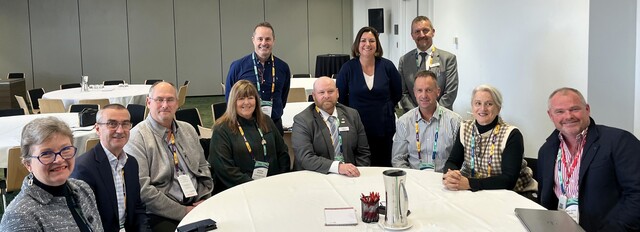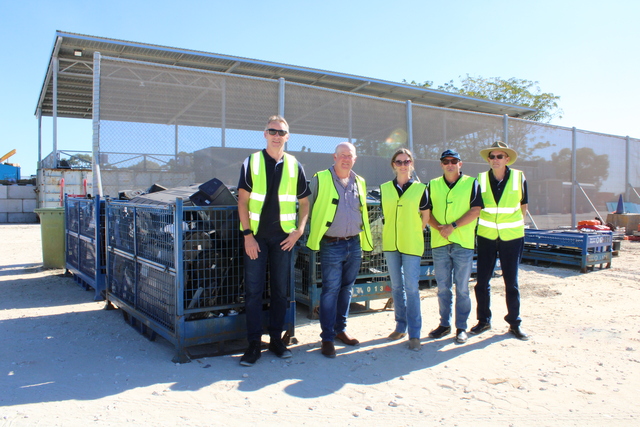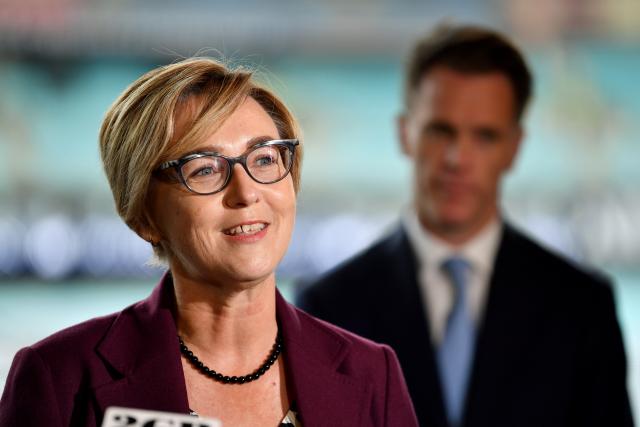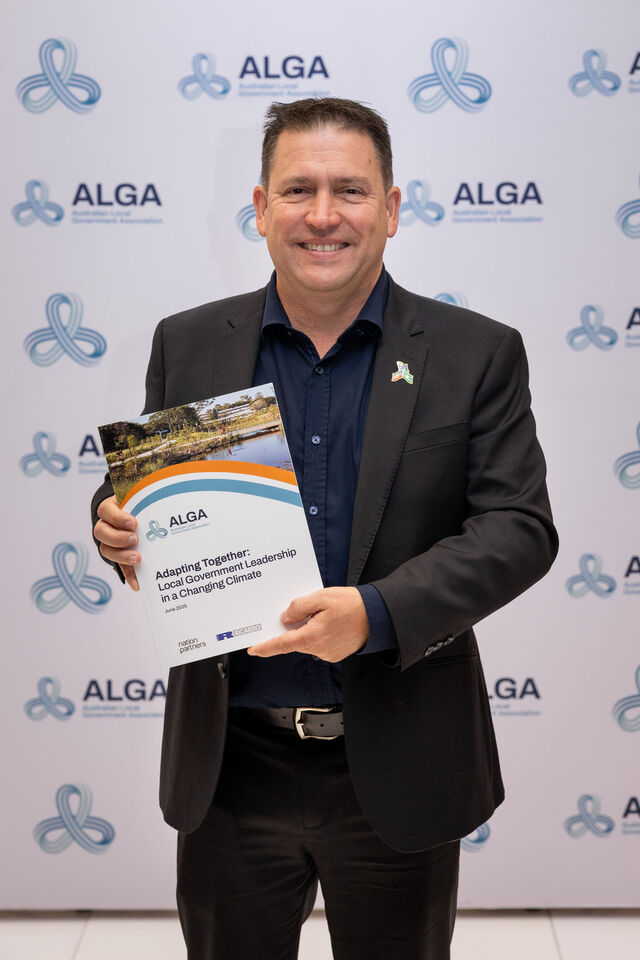At the 2009 Local Government Managers Australia National Congress in Darwin, Local Government FOCUS invited delegates to nominate individuals or teams from their councils who are
improving operations or enhancing service delivery within their community. In this edition, we showcase two more of our high achievers for 2009.
Greg Flynn, Principal Planner, Gosford City Council, New South Wales
With Gosford covering an area of 1,030 square kilometres, stretching east to the Tasman Sea, south to the Hawkesbury River and west to the Judge Dowling Range, Gosford City Council’s Principal Planner Greg Flynn said it is a city within a park.
“It is a very picturesque and scenic Local Government area, and as a planner, one of my key priorities is to maintain this natural beauty and capitalise on it,” he said.
Having always had an interest in drawing, Greg enrolled in Town Planning at university after travelling the world and working in mining, exploration camps and drafting roles. After completing his degree, he began working for Gosford City Council in 1988, and has worked in various developmental and strategic planning roles since. After taking on management positions at several other councils, Greg returned to Gosford in 1998, where he is now Principal Planner.
In this role, he works with Council’s Principal Building Surveyor to form the Independent Development and Environment Panel which manages Council delegations with respect to development applications, dealing with any projects up to $10 million. Greg is also responsible for managing development applications that go before Council, outlining and discussing them at Council meetings so that elected members clearly understand the proposals before them.
In 2004, Greg worked with a local software company to develop a program to assist with this task. Together they progressed a military application into a much appreciated planning tool.
“At the time, the 3D modelling software we developed was incomparable to anything else available,” Greg Flynn said. “It provides planners with a visual tool to demonstrate building and urban form, as well as streetscapes in human scale. It sets out what is reasonable and what is not for all concerned, whether it’s Council, an applicant or an independent decision maker.
“The software adds a visual dimension to planning that people can relate to. It removes the emotion so that we can move forward without wasting time on debate over minuscule issues.”
He was recognised by the Planning Institute of Australia in 2004 for his work in developing the application by receiving a Commendation for Excellence in Planning Award.
“We have only just scratched the surface of this technology and the future will be an exciting time for its development and use by planners and all urban decision makers,” he said. “Over the years, we have had much interest from other councils and even from overseas. I look forward to continuing to welcome this interest as the program develops and remains at the cutting edge.”
Greg said he most enjoys the variety, challenge and excitement his position presents.
“I come to work each day expecting a certain task or role, and quite often I am faced with something completely different,” he said. “It is humbling that the community places its trust in positions such as mine. That satisfaction is the key reason I have chosen to stay in the public sector, rather than branch off into consulting.”
He said the Council working environment is also nurturing.
“I work with a great group of people in a well structured organisation,” he said.
Greg Flynn said there are a number of issues currently facing the planning industry.
“With the global financial crisis (GFC), it has become easy for organisations to ignore all of the things it has stood for in the past at the expense of getting things done,” he said. “People are using it as an excuse to take shortcuts, and to steamroll developments that they wouldn’t have dreamt of getting off the ground five years ago.
“It remains an ongoing challenge for us to strike a medium between environmental, social and economically sustainable development, and the GFC has compounded this. We must bear in mind that the GFC will come to an end, but the developments we create now will be around for many years.”
He said the New South Wales Planning Act also needs attention.
“As it currently stands, it makes work difficult,” Greg Flynn said. “I’m sure anyone involved in the planning industry agrees, we must work with the New South Wales Government to rework the entire Act for the benefit of our communities.”
Councillor Jim McFadyen nominated Greg to appear in FOCUS. He said he is always helpful and available to provide assistance, especially to elected members.
“Greg is very informative in relation to planning issues and he thinks outside the square,” Councillor McFadyen said. “He is a true visionary and he has really assisted in bringing plans to life for the purposes of Council decision making.”
Infrastructure Projects Team, Bass Coast Shire Council, Victoria
When walking past the Local Government FOCUS stand at the LGMA conference in Darwin, it didn’t take long for Bass Coast Shire Council’s CEO, Allan Bawden, to think of an outstanding Council team to nominate to appear in FOCUS.
With Council’s Infrastructure Projects Team about to finish major works on the construction of roads to Victoria’s new desalination plant site, it was a clear standout.
In 2007 the Victorian Government released the ‘Our Water Our Future’ plan, outlining its intention to develop a seawater reverse osmosis desalination plant near Bass Coast Shire’s town of Wonthaggi – 132 kilometres southeast of Melbourne.
Intended to provide up to 150 gigalitres of additional water per year, the plant will augment Melbourne’s water supply, as well as other regional supply systems.
The Victorian Government has a tight timeframe to deliver the project. Having announced the winning tender for construction and operation of the plant in June 2009, it simultaneously announced that construction was scheduled to commence in late 2009, with water to be delivered by late 2011.
Allan Bawden said Council had lobbied the Victorian Government over the need to upgrade access roads around the site. With the announcement that the project was going ahead, the Government called on Council to construct and upgrade the access roads, before construction of the actual plant commences.
He said the roads needed to be able to deal with increased traffic, particularly trucks and large vehicles.
“The Infrastructure Projects Team was enthusiastic to put in a quote, and from there, Council and the Government developed an agreement to construct the $12 million project,” Allan Bawden said.
“With Council’s usual capital works budget around $10 to $12 million, this project immediately doubled the Infrastructure Project Team’s workload for the year. It is a massive project in comparison to what the team usually deals with, but they believed they had the knowledge, expertise and ability to undertake the task in the tight timeframe it was given and both the Government and Council are impressed with the way it has been rolled out so far.
“The team has been enthusiastic and motivated and it has had the ability to pull together and deliver.”
The majority of works are expected to be completed by November, with smaller projects and the entire task due for completion in March 2010.
Council’s Infrastructure Director, Steve Piasente, said the Infrastructure Projects Team comprises nine members, mostly from engineering backgrounds.
The team’s usual role is to deliver Council’s capital works program, but with the major addition to the program this year, it has had to engage contractors and consultants to undertake some of the work.
“This is a once in a lifetime project for the Shire,” Steve Piasente said. “Council has never seen anything of this size or intensity, especially in the timeframe we have to deliver.
“We are using consultants to assist with our usual tasks where possible and are sharing the other tasks around between the staff that we have, rather than making it one person’s role.
“We have also engaged several contractors to assist with delivering the road upgrades.”
Steve Piasente said that the entire team has been excellent in taking on the additional workload.
“We changed the structure of the team a few years ago and gave staff greater responsibility for delivery of projects,” he said.
“In the past, staff were purely involved in the design process, however there was no ownership of projects.
“Now with a particular responsibility for a certain area, each staff member has a sense of ownership and they thrive on it.
“They are keen and enjoy delivering projects from the ground up.”







